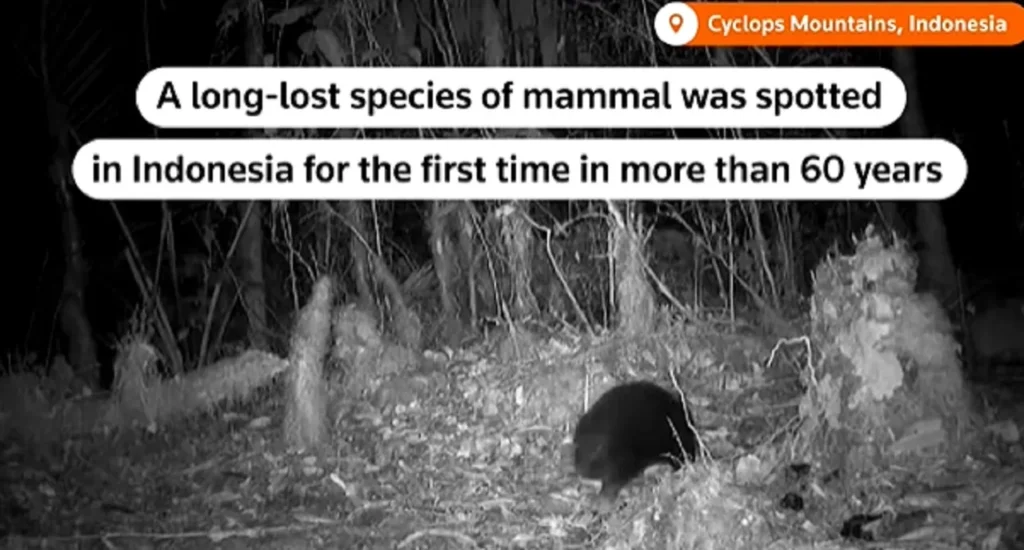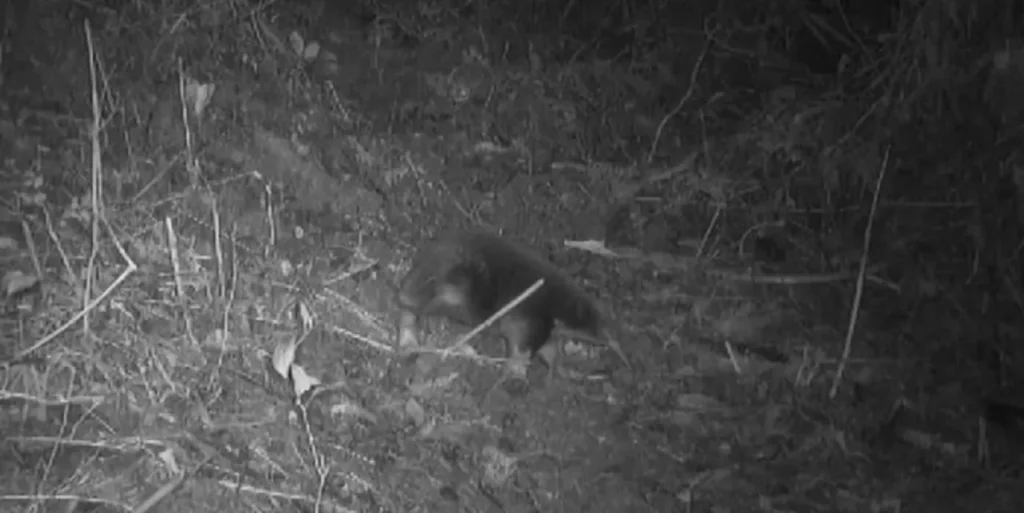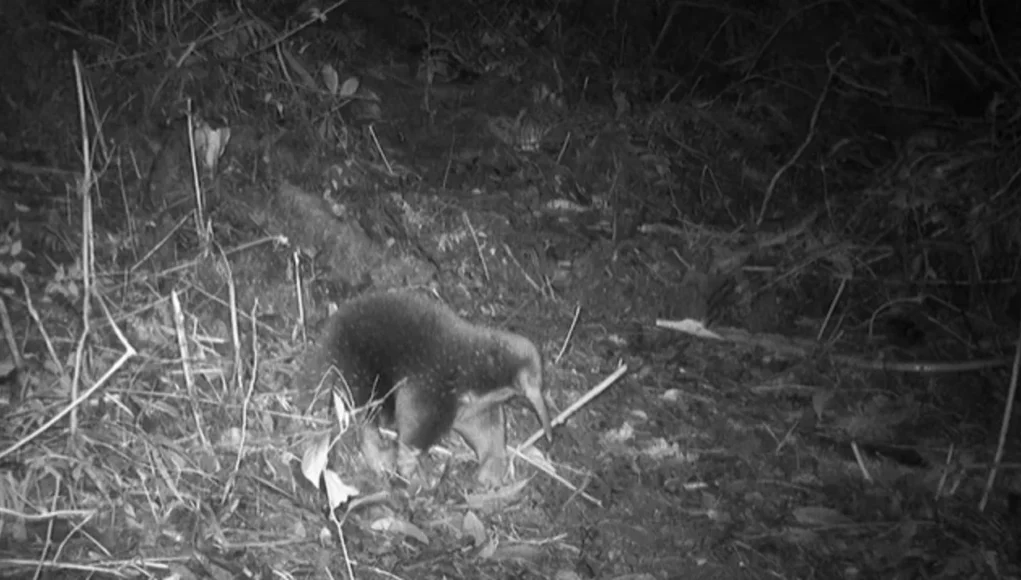Big news: For over six decades, the Attenborough’s long-beaked echidna, an elusive egg-laying mammal, was relegated to the realm of scientific mystery, its existence shrouded in doubt. But in a thrilling twist, a recent expedition to the remote Cyclops Mountains of Indonesia has yielded astonishing results: the first-ever images of this enigmatic creature.

IN THIS ARTICLE:
Lost Echidna Emerging from the Shadows
Zaglossus attenboroughi, named after the esteemed naturalist Sir David Attenborough, was last seen in 1961, leaving scientists to fear the worst. The only evidence of its existence was a single museum specimen, a solitary remnant of a species presumed lost to the world.
The disappearance of the Attenborough’s long-beaked echidna left a void in our understanding of biodiversity, a poignant reminder of the fragility of life on Earth. But amidst the uncertainty, a glimmer of hope remained. In 2019, amidst the lush greenery of the Cyclops Mountains, researchers stumbled upon tantalizing clues – a series of nose pokes, distinctive markings left by the echidna’s long, probing snout.
A Collaborative Effort for a Rare Discovery
Driven by renewed determination, a team of scientists and experts from Britain and Indonesia embarked on a four-week expedition in 2022, their hearts set on unraveling the mystery of the lost echidna. Armed with an arsenal of 80 camera traps, they meticulously surveyed the rugged terrain, their spirits buoyed by the prospect of uncovering a living relic of the past.
The Moment of Triumph
After weeks of anticipation and tireless searching, the expedition team’s persistence paid off. As they reviewed the trove of camera trap footage, their eyes widened in disbelief. There, amidst the verdant undergrowth, was the elusive Attenborough’s long-beaked echidna, its spiky body and elongated snout unmistakable.
The discovery sent shockwaves through the scientific community, igniting a wave of jubilation and excitement. For the first time in over half a century, the Attenborough’s long-beaked echidna had emerged from the shadows.

Unveiling a Treasure
The Attenborough’s long-beaked echidna is a fascinating creature, a relic of a bygone era that has somehow managed to cling to existence. With its spiky fur, elongated snout, and insectivorous diet, it embodies the remarkable diversity and adaptability of life on Earth.
Its rediscovery is not merely a scientific triumph; it is a beacon of hope for conservation efforts worldwide. The presence of this once-thought-extinct species highlights the importance of protecting even the most remote and unexplored habitats, as they may harbor hidden treasures of the natural world.
A Tribute to Sir David Attenborough
The naming of this extraordinary creature after Sir David Attenborough is a fitting tribute to his unwavering dedication to wildlife conservation and his unparalleled ability to inspire and educate. His passion for the natural world has ignited a global movement for environmental protection, and his work continues to inspire countless individuals to champion the cause of endangered species.

Conservation and Future Research
The rediscovery of the Attenborough’s long-beaked echidna is a momentous occasion, but it also underscores the urgent need for conservation efforts. With its limited population and restricted habitat, this species remains vulnerable to threats such as habitat loss, hunting, and climate change.
Further research is crucial to understanding the behavior, ecology, and conservation needs of this elusive creature. By unraveling the mysteries of the Attenborough’s long-beaked echidna, we can develop effective strategies to protect this rare species and ensure its survival for generations to come.







